You don’t need a sun-drenched windowsill to grow thriving cacti in your home. While most people think these desert plants require intense light, several species actually prefer shadier spots. From the vibrant Thanksgiving Cactus that blooms in autumn to the exotic Night-blooming Cereus with its moonlit flowers, these low-light varieties can transform your dimmer spaces into green sanctuaries. Let’s explore which resilient cacti will flourish in your home’s less sunny corners.
Contents
1. Thanksgiving Cactus
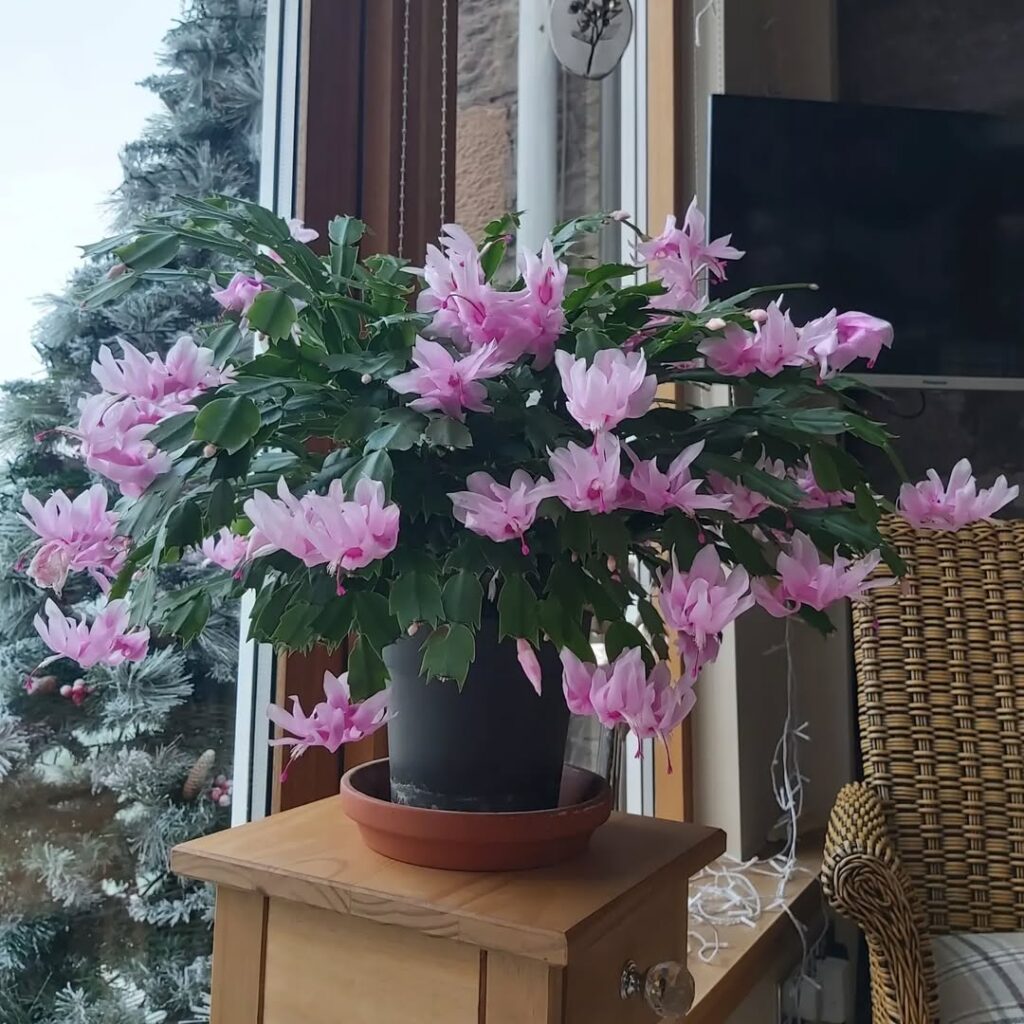
The Thanksgiving cactus (Schlumbergera truncata) is a popular indoor succulent that blooms around late fall, typically near the Thanksgiving holiday. Unlike desert cacti, this epiphytic plant naturally grows on trees in Brazilian rainforests and has adapted well to indoor environments. Its segmented stems produce vibrant flowers in shades of pink, red, white, or purple, making it an attractive houseplant that can bloom reliably year after year with proper care.
- Light: Bright, indirect light; can tolerate lower light conditions but needs darkness at night to trigger blooming
- Water: Keep soil lightly moist during growing season; reduce watering during rest period after flowering
- Soil: Well-draining potting mix rich in organic matter; preferably mixed with perlite or orchid bark
- Temperature: 60-70°F (15-21°C); cooler nights around 55-65°F (13-18°C) to encourage blooming
- Humidity: Moderate to high humidity (50-60%)
- Fertilizer: Feed monthly with balanced fertilizer during growing season; stop during blooming period
- Container: Use pot with drainage holes; prefer to be slightly pot-bound
2. Night-blooming Cereus

The night-blooming cereus (Epiphyllum oxypetalum) is a striking cactus species known for its large, fragrant flowers that bloom for just one night before wilting by morning. These ethereal white blooms can reach up to 8 inches in diameter and emit a sweet vanilla-like fragrance that attracts nocturnal pollinators. Though primarily grown for its spectacular nocturnal display, the plant itself features long, flat, leaf-like stems that can grow several feet in length, making it an attractive hanging or climbing plant even when not in bloom.
- Light: Bright, indirect light; can tolerate lower light conditions; avoid direct sunlight
- Water: Allow soil to dry between waterings; reduce watering in winter
- Soil: Well-draining potting mix with added perlite or orchid bark
- Humidity: Moderate humidity (40-60%)
- Temperature: 60-75°F (15-24°C)
- Container: Pot with drainage holes
- Fertilizer: Feed monthly during growing season with balanced fertilizer
- Support: Provide trellis or support for climbing stems
3. Dragon Fruit Cactus
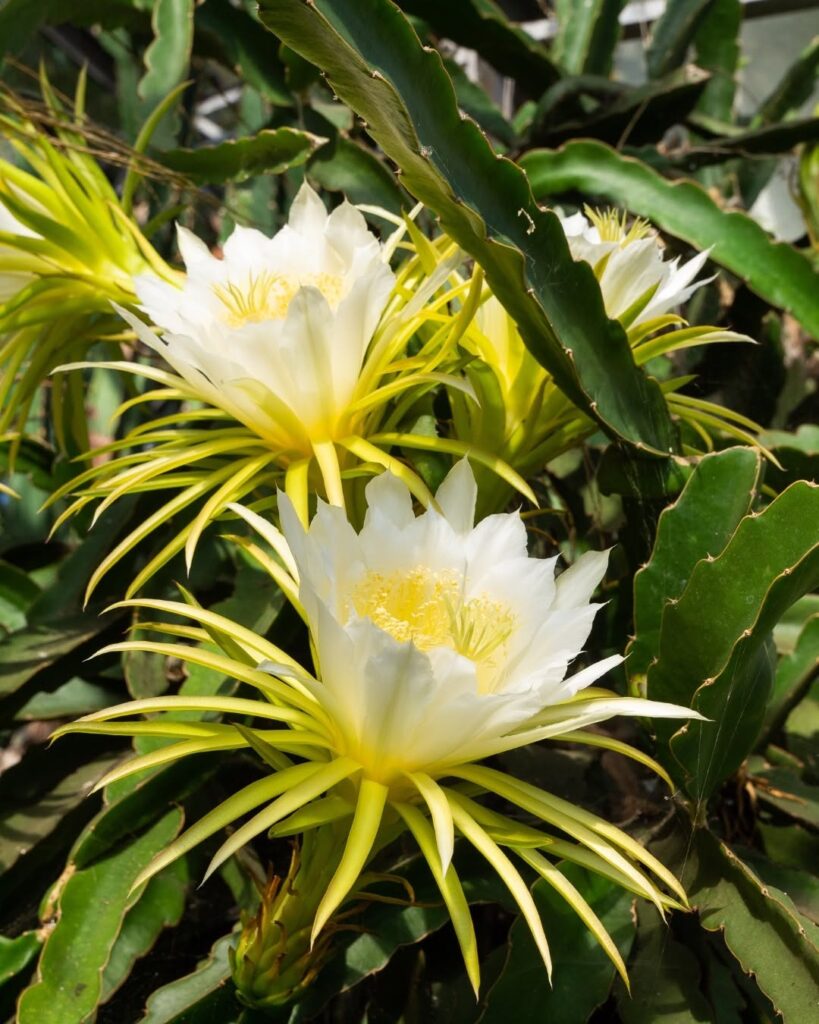
The dragon fruit cactus (Hylocereus undatus) is a climbing cactus species known for producing large, vibrant pink or red fruits with white or red flesh. Native to Central and South America, this epiphytic plant develops long, triangular stems with aerial roots that help it climb and attach to surfaces. While primarily grown for its exotic edible fruits, the dragon fruit cactus also produces spectacular large white flowers that bloom at night, though they last only one evening.
- Light: Partial shade to full sun; can tolerate low light but fruits best with 6-8 hours of sunlight
- Water: Moderate watering every 7-10 days; allow soil to dry between waterings
- Soil: Well-draining cactus mix with added organic matter
- Temperature: 65-85°F (18-29°C)
- Humidity: Tolerates average household humidity
- Support: Requires strong trellis or post for climbing
- Fertilizer: Monthly feeding during growing season with balanced fertilizer
- Container: Large pot with adequate drainage holes
- pH: 6.1-7.5
4. Moon Cactus
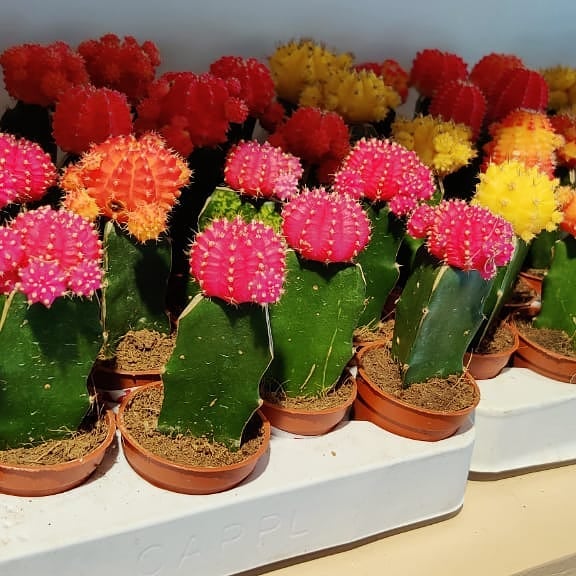
The Moon Cactus, also known as Gymnocalycium mihanovichii, is a colorful hybrid cactus that can survive in lower light conditions than most cacti. The plant consists of two parts: a bright-colored mutant top section (typically red, yellow, or orange) grafted onto a green rootstock base. While the vibrant top portion lacks chlorophyll and cannot produce its own food, the green base provides necessary nutrients, allowing the entire plant to tolerate shadier spots that would normally be unsuitable for desert cacti.
- Light: Bright indirect light to partial shade; avoid direct sunlight which can fade or damage the colorful top
- Water: Allow soil to dry between waterings; water sparingly during winter
- Soil: Well-draining cactus mix
- Temperature: 60-80°F (15-27°C)
- Humidity: Average household humidity levels
- Fertilizer: Light feeding with cactus fertilizer during growing season
- Container: Small pot with drainage holes
- pH: 6.0-7.0
5. Desert Mistletoe Cactus
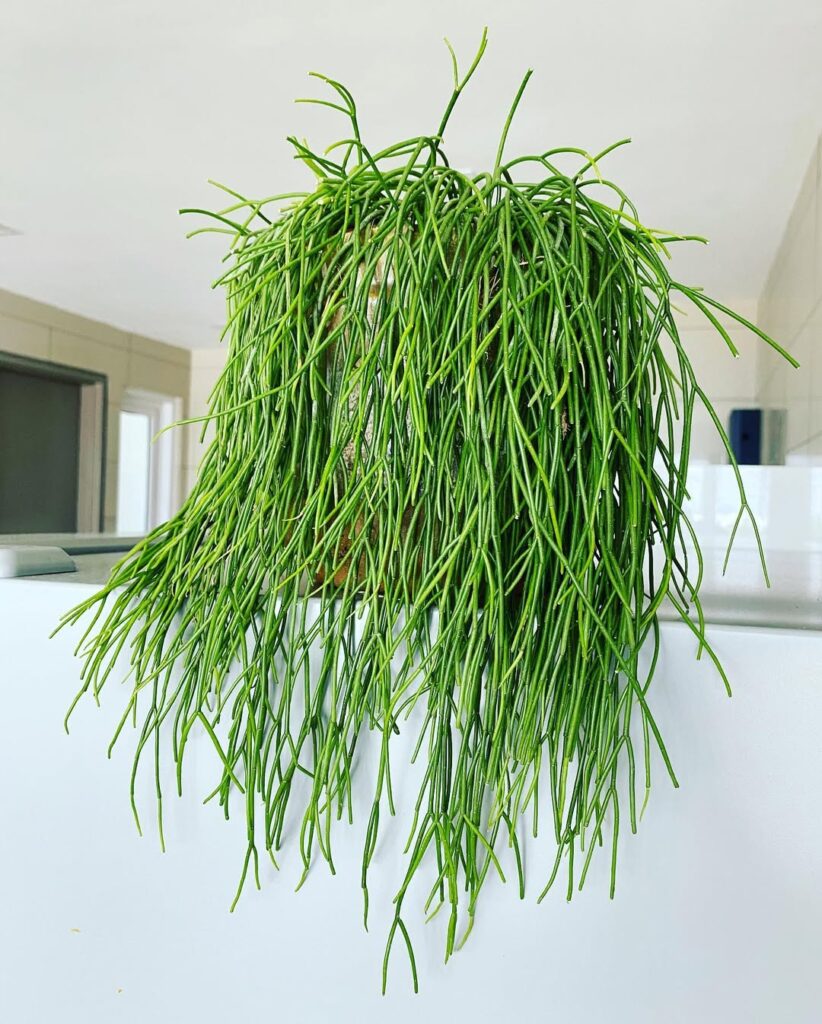
The Desert Mistletoe Cactus (Rhipsalis baccifera) is an epiphytic cactus that naturally grows on tree branches in tropical and subtropical forests. Unlike typical desert cacti, this species has long, thin stems that cascade downward and produce small white flowers followed by translucent berries. As one of the few cacti species native to Africa and Asia as well as the Americas, it has adapted well to shadier conditions, making it an excellent choice for indoor spaces with limited natural light.
- Light: Thrives in bright indirect light to partial shade; avoid direct sunlight
- Water: Keep soil lightly moist but not waterlogged; water when top inch of soil feels dry
- Soil: Well-draining potting mix with added orchid bark and perlite
- Humidity: Prefers moderate to high humidity (50-70%)
- Temperature: 60-80°F (15-27°C)
- Container: Use hanging baskets or elevated pots to allow stems to trail
- Fertilizer: Feed with diluted balanced fertilizer monthly during growing season
6. Climbing Ric Rac Cactus
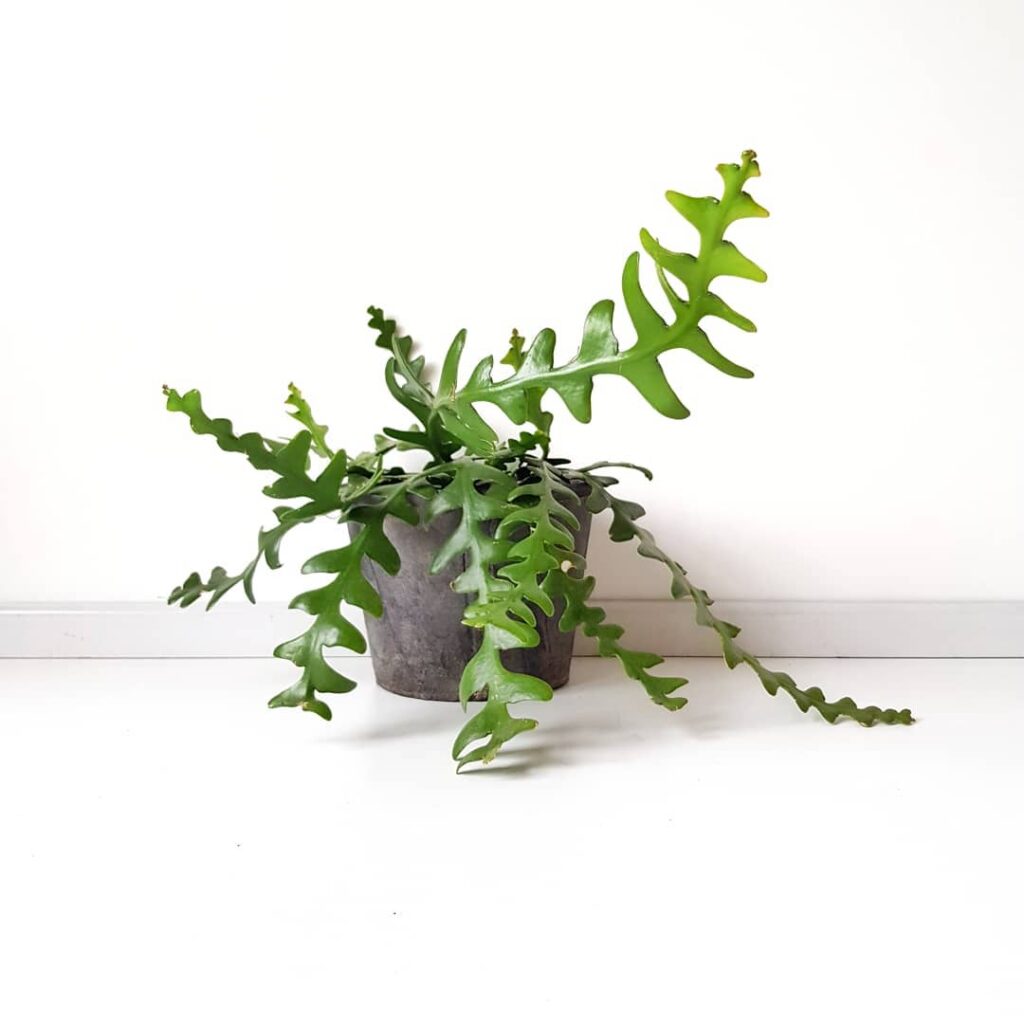
The Climbing Ric Rac Cactus (Selenicereus anthonyanus) is an epiphytic cactus known for its distinctive zigzag-patterned stems that resemble fishbones or rickrack trim. This unique climbing cactus produces large, fragrant white flowers that bloom at night during summer months. Native to southern Mexico, it can grow several feet long and is often grown in hanging baskets or trained to climb supports, making it an excellent choice for indoor displays.
- Light: Bright, indirect light; can tolerate lower light conditions but may not flower; protect from direct afternoon sun
- Water: Allow soil to dry between waterings; reduce watering in winter; higher humidity preferred
- Soil: Well-draining potting mix with added orchid bark, perlite, and coarse sand
- Temperature: 60-80°F (15-27°C); protect from cold drafts
- Fertilizer: Feed monthly during growing season with balanced, water-soluble fertilizer
- Container: Use hanging baskets or pots with good drainage; provide support structure if growing vertically
- Propagation: Easily propagated through stem cuttings
7. Fishbone Cactus
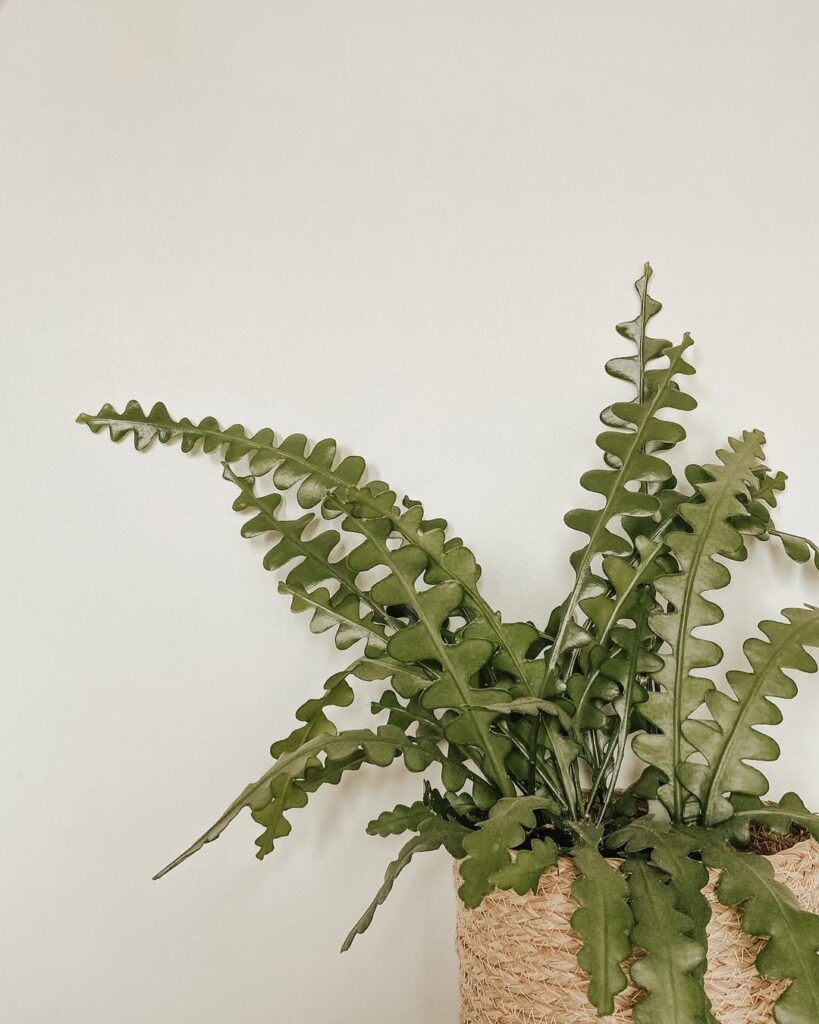
The Fishbone Cactus (Epiphyllum anguliger) is a unique epiphytic cactus known for its distinctive zigzag-patterned stems that resemble fish bones or a rickrack trim. Native to Mexican rainforests, this cactus naturally grows on trees and produces large, fragrant white flowers that bloom at night during late summer or fall. Unlike many desert cacti, the Fishbone Cactus has adapted to shadier conditions, making it an excellent choice for indoor growing.
- Light: Bright, indirect light; can tolerate low light conditions but may not flower; protect from direct sunlight
- Water: Water when top inch of soil feels dry; reduce watering in winter; prefers higher humidity
- Soil: Well-draining, organic-rich potting mix; ideal mix includes orchid bark, perlite, and regular potting soil
- Temperature: 65-80°F (18-27°C); can tolerate brief periods of cooler temperatures
- Container: Use hanging baskets or containers with drainage holes
- Fertilizer: Feed with balanced, water-soluble fertilizer monthly during growing season
- Humidity: Moderate to high humidity; mist occasionally if indoor air is dry
Absolutely! Here are descriptions of the low-light-tolerant cacti following your requested format:
8. Scarlet Ball Cactus
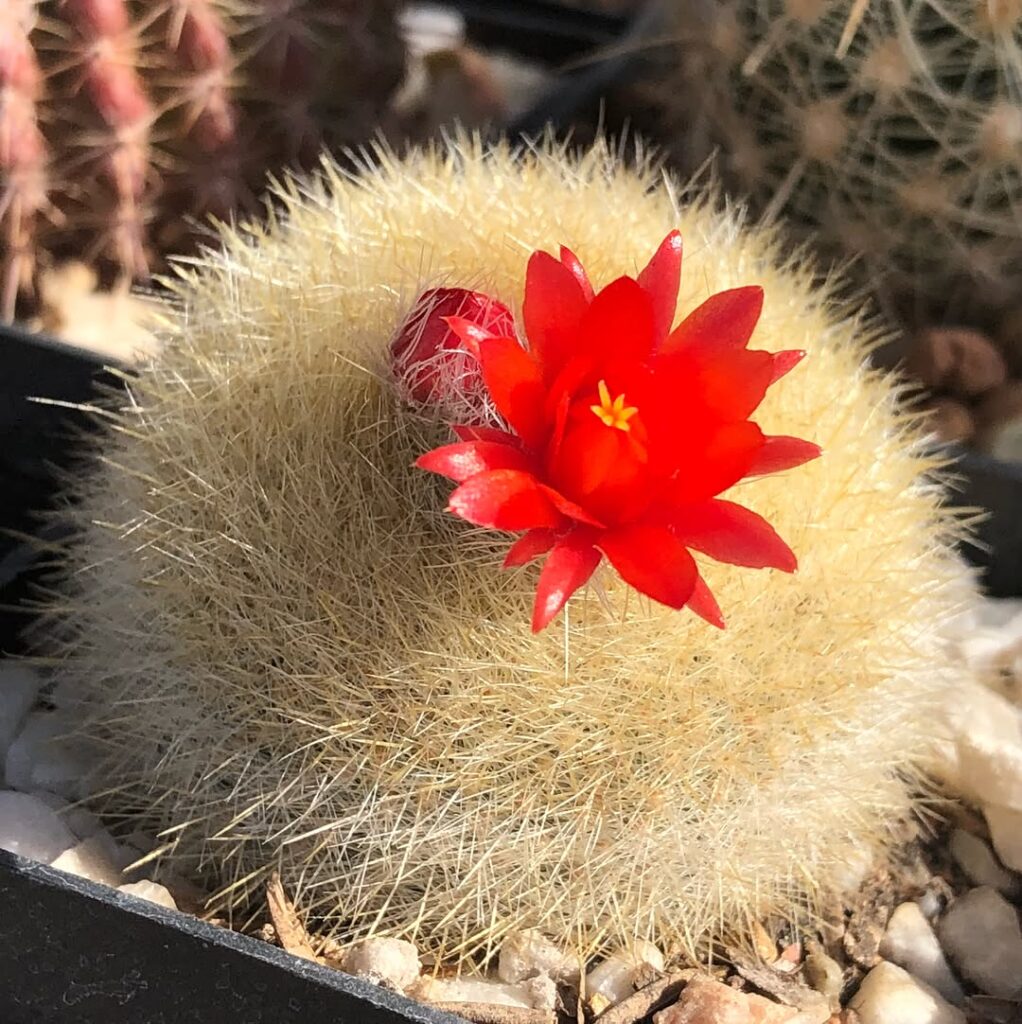
The Scarlet Ball Cactus (Parodia haselbergii) is a small, round cactus native to South America, known for its striking red or yellow flowers that bloom in clusters. It has a globular shape with fine, golden spines that give it a soft, fuzzy appearance. Despite its preference for bright light, it can adapt to lower-light conditions indoors, making it an excellent choice for shaded areas.
- Light: Prefers bright, indirect light but tolerates low light indoors
- Water: Allow soil to dry completely between waterings; reduce watering in winter
- Soil: Well-draining cactus mix with added sand or perlite
- Temperature: 60-80°F (16-27°C); sensitive to frost
- Humidity: Thrives in average household humidity
- Fertilizer: Feed with diluted cactus fertilizer during growing season (spring and summer)
- Container: Clay or terracotta pot with drainage holes
- Space: Slow-growing; stays compact and is suitable for small spaces
9. Crown Cactus
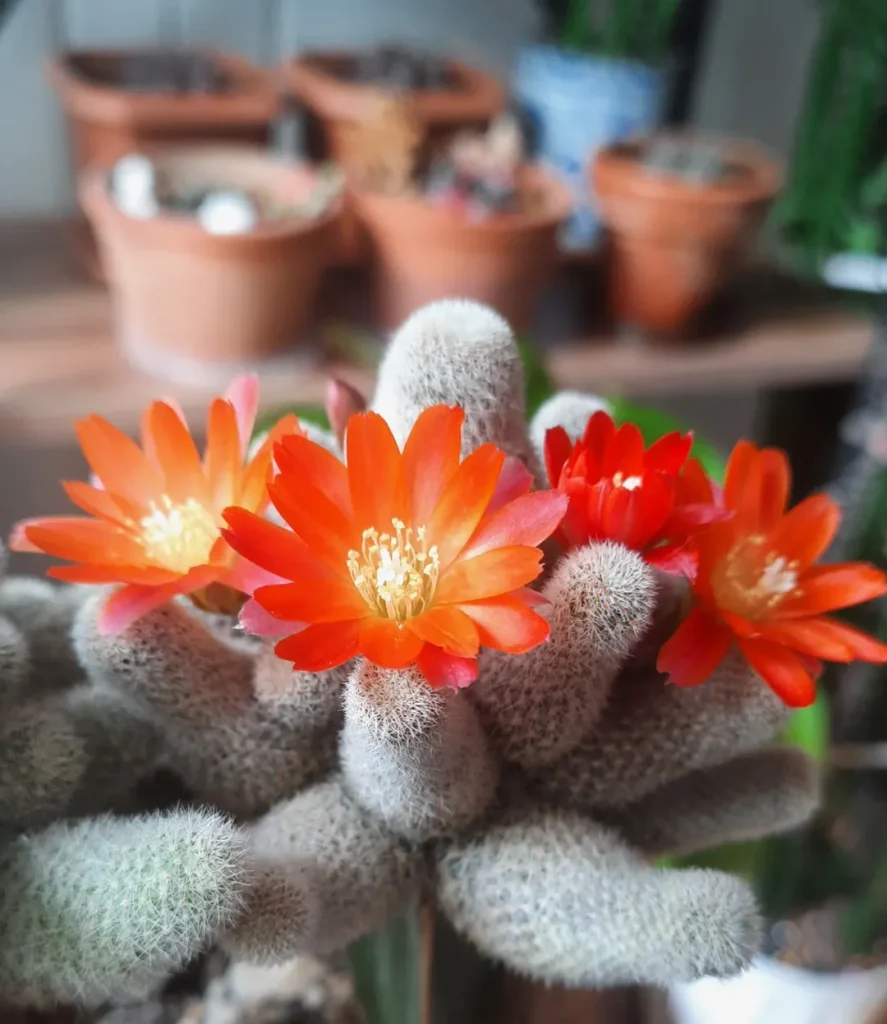
The Crown Cactus (Rebutia spp.) is a small, clustering cactus that originates from South America. It forms dense clusters of globular stems that produce vibrant flowers in shades of red, orange, and yellow. Its ability to tolerate lower light conditions indoors makes it a versatile option for cactus lovers with limited sunlight.
- Light: Bright, indirect light preferred; tolerates some shade indoors
- Water: Allow soil to dry between waterings; water sparingly in winter
- Soil: Well-draining cactus mix with added pumice for aeration
- Temperature: 50-75°F (10-24°C); can tolerate cooler temperatures
- Humidity: Adaptable to indoor humidity levels
- Fertilizer: Light feeding with diluted cactus fertilizer during active growth
- Container: Small, shallow pot with drainage holes
- Space: Slow-growing; ideal for compact arrangements
10. Christmas Cactus
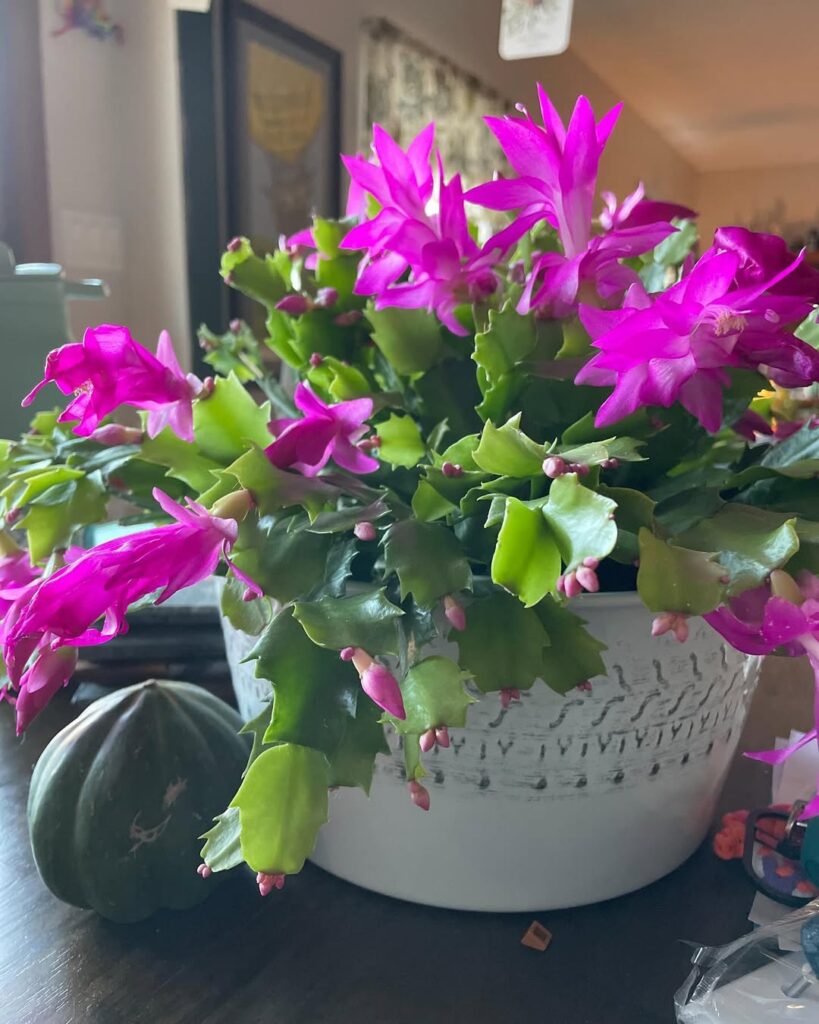
The Christmas Cactus (Schlumbergera bridgesii) is an epiphytic cactus native to Brazil’s forests. It features flattened, segmented stems that produce stunning tubular flowers in shades of pink, red, and white during winter. Unlike many other cacti, it thrives in lower light and prefers indirect illumination rather than direct sunlight.
- Light: Indirect light; tolerates low-light conditions indoors
- Water: Keep soil slightly moist but allow drying between waterings
- Soil: Well-draining mix with peat and perlite
- Temperature: 60-75°F (15-24°C); avoid sudden temperature drops
- Humidity: Prefers higher humidity; occasional misting helps
- Fertilizer: Monthly feeding with diluted houseplant fertilizer in growing season
- Container: Ceramic or plastic pot with drainage holes
- Space: Moderate growth; can be pruned for shaping
11. Harrisia fragrans
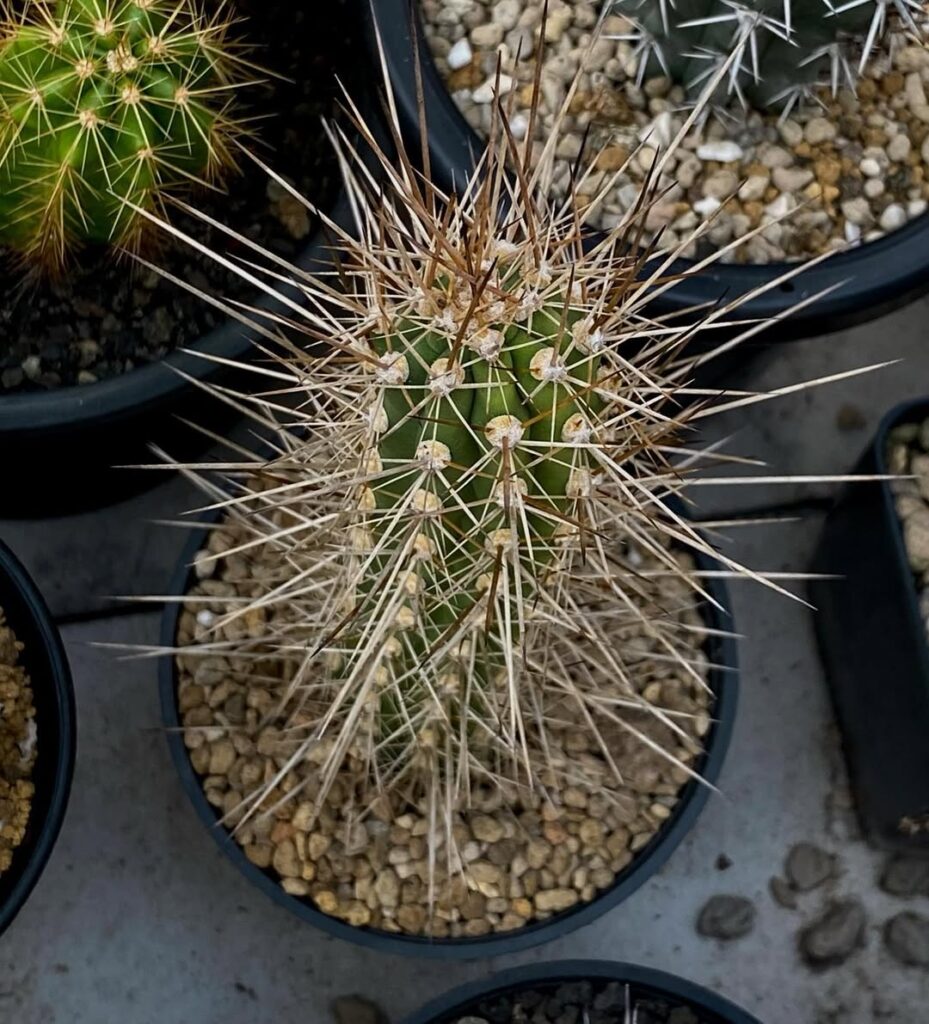
Harrisia fragrans is a night-blooming cactus native to the southeastern United States, known for its fragrant white flowers that appear under moonlight. It has tall, spiny stems with a columnar growth pattern, making it adaptable to indoor environments with lower light levels.
- Light: Prefers bright, indirect light but tolerates some shade
- Water: Allow soil to dry out completely between waterings
- Soil: Well-draining mix with sand or pumice
- Temperature: 60-80°F (16-27°C); avoids freezing temperatures
- Humidity: Tolerates normal indoor humidity
- Fertilizer: Light feeding with diluted cactus fertilizer during growing season
- Container: Clay or terracotta pot with drainage holes
- Space: Moderate growth rate; may need staking over time
